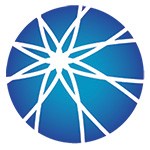Defining Equity
October 30, 2023

|
AUCD's working definition of equity in IDD:
Equity in intellectual and developmental disabilities is (1) the absence of systematic disparities and unjust systemic policies and practices that disadvantage individuals with developmental disabilities and their families in their pursuit of what is needed to be included, and valued members of their communities; and (2) the removal of systemic barriers to opportunities while recognizing intersections of disability with other important factors such as age, ethnicity, geography or place, ideology, language, national origin, race, sexual orientation and gender identity, socioeconomic status, and spirituality.
Plain Language:
Equity is when we work to give everyone a fair chance in every area of life. This does not mean everyone is treated the same. This means we understand that people may have different needs for a fair chance. That is because the world around us and laws can make life easier or harder for some people. For example, all kids should be able to go to school. But a child with an “intellectual and developmental disability” (IDD) has a harder time learning. So, students with IDD might need extra help in class. Equity means we try to meet their needs so they can be in the class with everyone else. Equity shows that we want everyone to belong and reach their goals.
There are times when the world makes it harder for people with IDD to reach their goals. A “barrier” is anything that gets in the way of people reaching their goals. We need to get rid of barriers for people with IDD. It is also important to think about other people who face barriers. These people might include:
-
People of different ages, ethnicity, races, or religions
-
People with different gender identities or sexual orientations
-
People with less money
People might also face more barriers depending on where they live, where they were born, how they think, or what language they speak.
All of these groups who face extra barriers have people with IDD in them. Every group of people with IDD includes people from these other groups too. When you have IDD and belong to one or more of the other groups facing barriers, it feels like more than the two things added together. For example, maybe a person has IDD and is also Hispanic. That means they are dealing with the barriers faced by people with IDD and Hispanic. That is called an “intersection.” We should consider this when deciding how to remove barriers and include everyone.
Easy Read:
*Graphics are from thenounproject.com
| Equity is important for people with disabilities. | |
| |
People with disabilities sometimes must work harder to be included. |
| |
People with disabilities should be included when decisions about their life are being made. |
| |
Like going to school, everyone gets the chance to go to school. Some people need more help getting their schoolwork done. |
| |
Sometimes the rules say people with disabilities do not get the same chance as people without disabilities. |
| |
These rules might be because of unfair laws. |
| |
Sometimes there are rules that people make that treat people with disabilities unfairly. |
| |
We call these barriers. A barrier is anything in your way. |
| |
When we want equity, we don’t need barriers. |
| |
Some people have more than one barrier. |
| |
That might be because they are people with a disability and are different in other ways. |
| |
Some differences are because of age, gender, race, or religion. |
| |
We call these differences identities. |
| |
You may have more barriers than other people when you have more than one identity. |
 |
To include everyone, we must find the barriers. |
| |
Then we need to decide together how to remove the barrier. |







